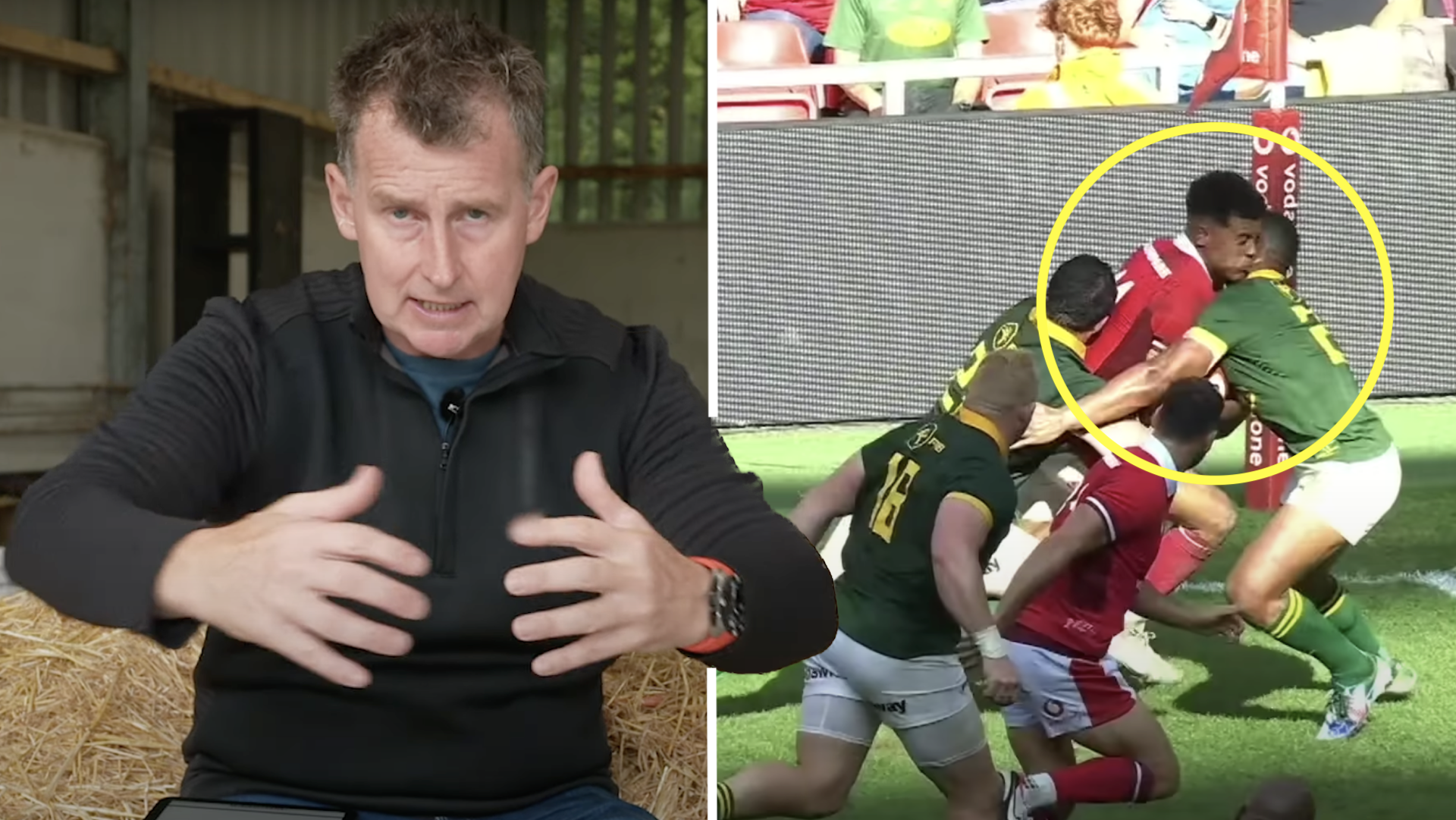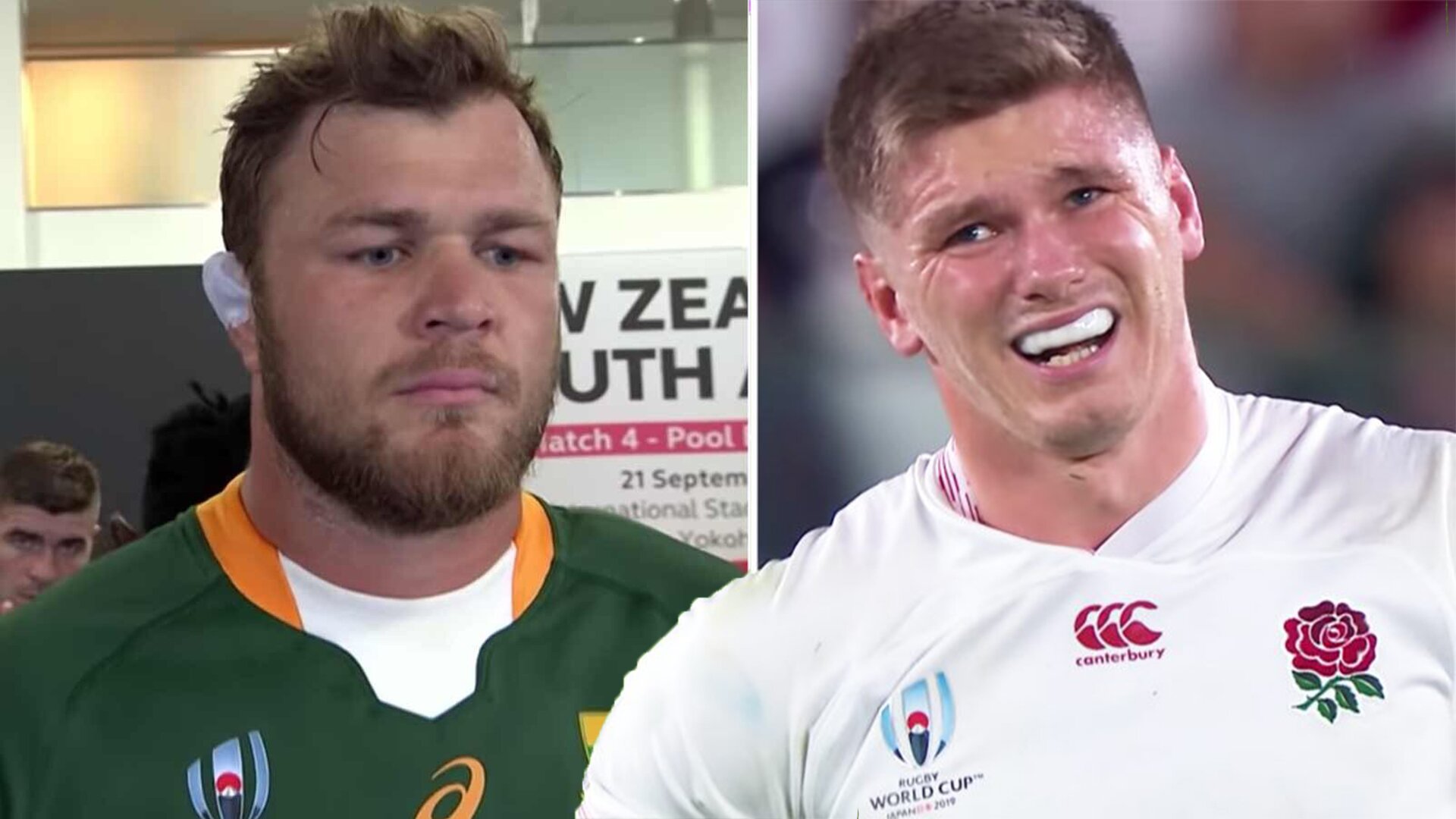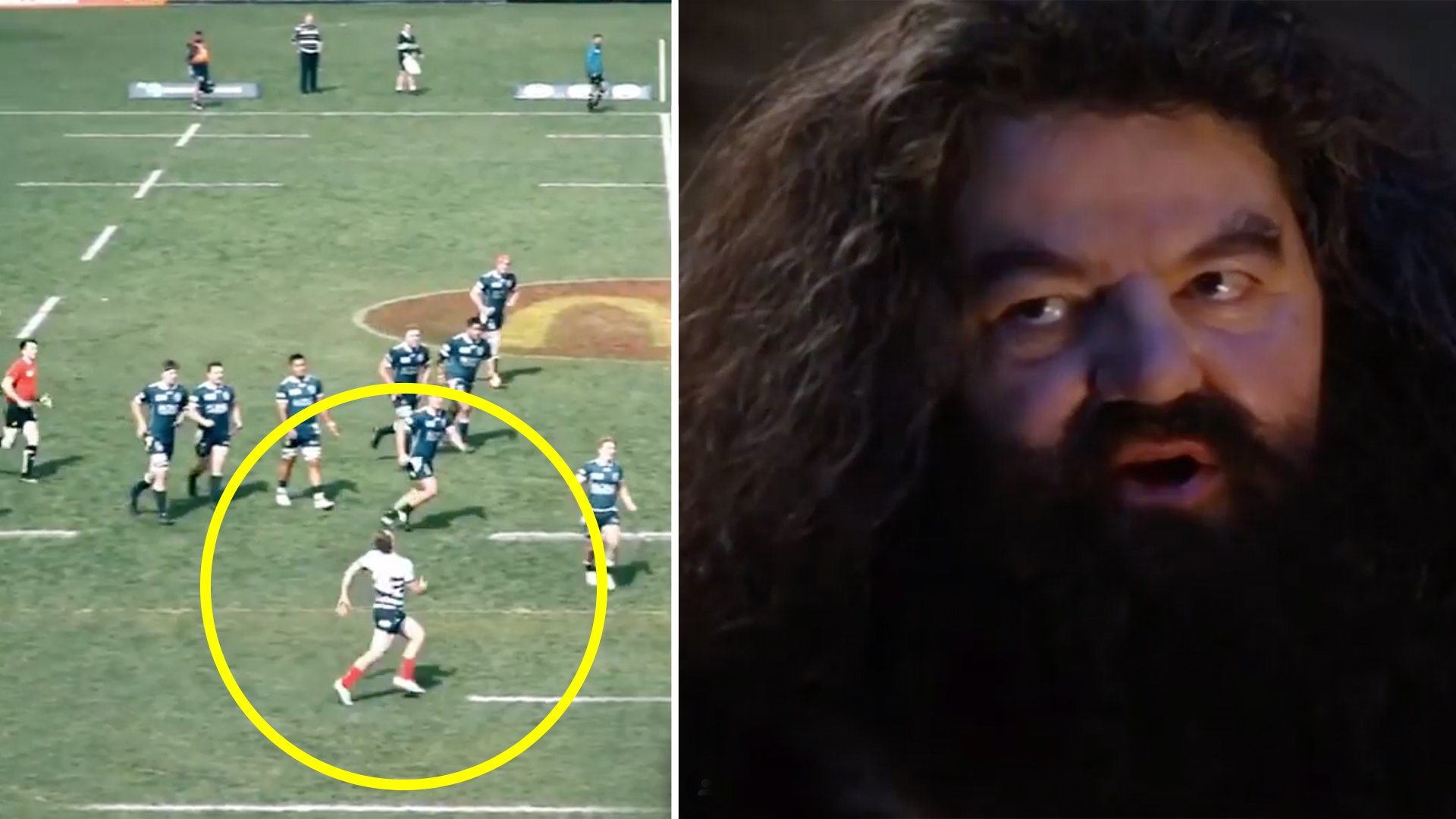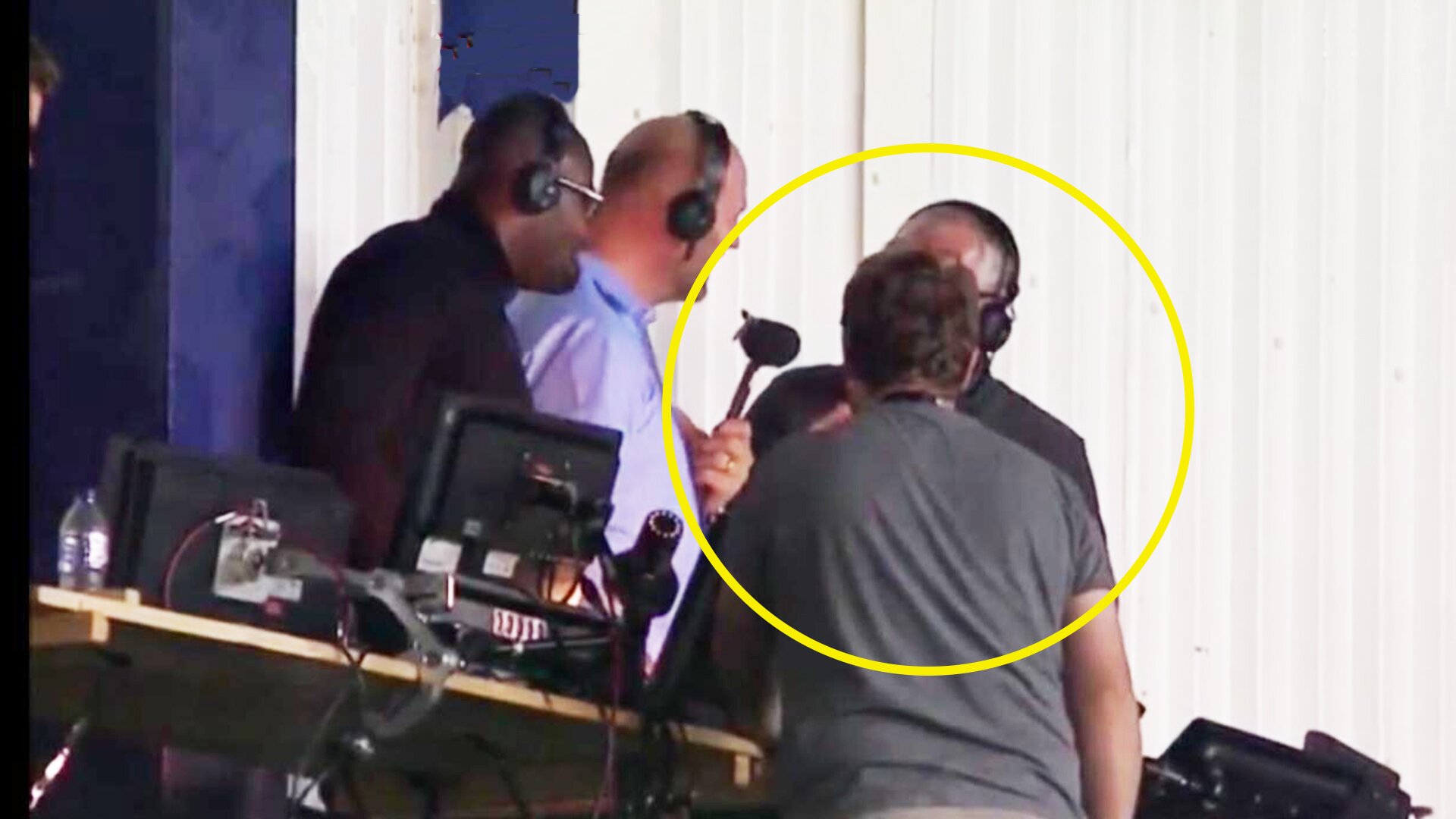
Nigel Owens compares Bok Damian Willemse’s yellow card to Owen Farrell’s red
If you went online after South Africa’s mauling of Wales on Saturday, you would have found plenty of people questioning why the Springboks’ Damian Willemse was only shown a yellow card for his high tackle on Rio Dyer while Owen Farrell was red carded the week before for a similar tackle against Wales.
By now most people have seen Farrell’s red card which he was eventually banned for this week, but Willemse’s has not received as much attention. It has been debated on X, but it has been nowhere near as big as Farrell’s tackle- then again what has?
Take a look at the tackle:
Refereeing great Nigel Owens was able to shed some light this week on why the two tackles had completely different outcomes- one player only being yellow carded and the other being banned for four games. It all comes down to mitigation. While Farrell had no mitigation as he simply launched his shoulder into the head of Taine Basham, Owens explained on the latest episode of Whistle Watch why there was mitigation for the Bok.
“Damian Willemse yellow card,” Owens said. “Right then, we go back to the process that the referee will look at. Do we have foul play? We do, because we have an upright tackle and there is contact with the head. Do we have a high degree of danger? Yes we do, we do have head contact so we have a high degree of danger. Do we have mitigation? And this is the key here. We do.
“Although the tackle is upright, and there is contact with the head, the tackler has to take responsibility for what happens next because he hasn’t done everything he could do to avoid the head contact, ie he could have gone lower to avoid that. But it is what we call a ‘static tackle’, so he’s absorbing the player coming to him with the ball rather than leading and going into him, which then lowers the degree of danger.
“Not so much mitigation, but it certainly lowers the degree of danger. So what the referee feels here, and what the bunker felt here, yes there was foul play, yes there was contact with the head, but we have a low degree of danger which means the yellow card was then correctly given.”
Watch the video here:


